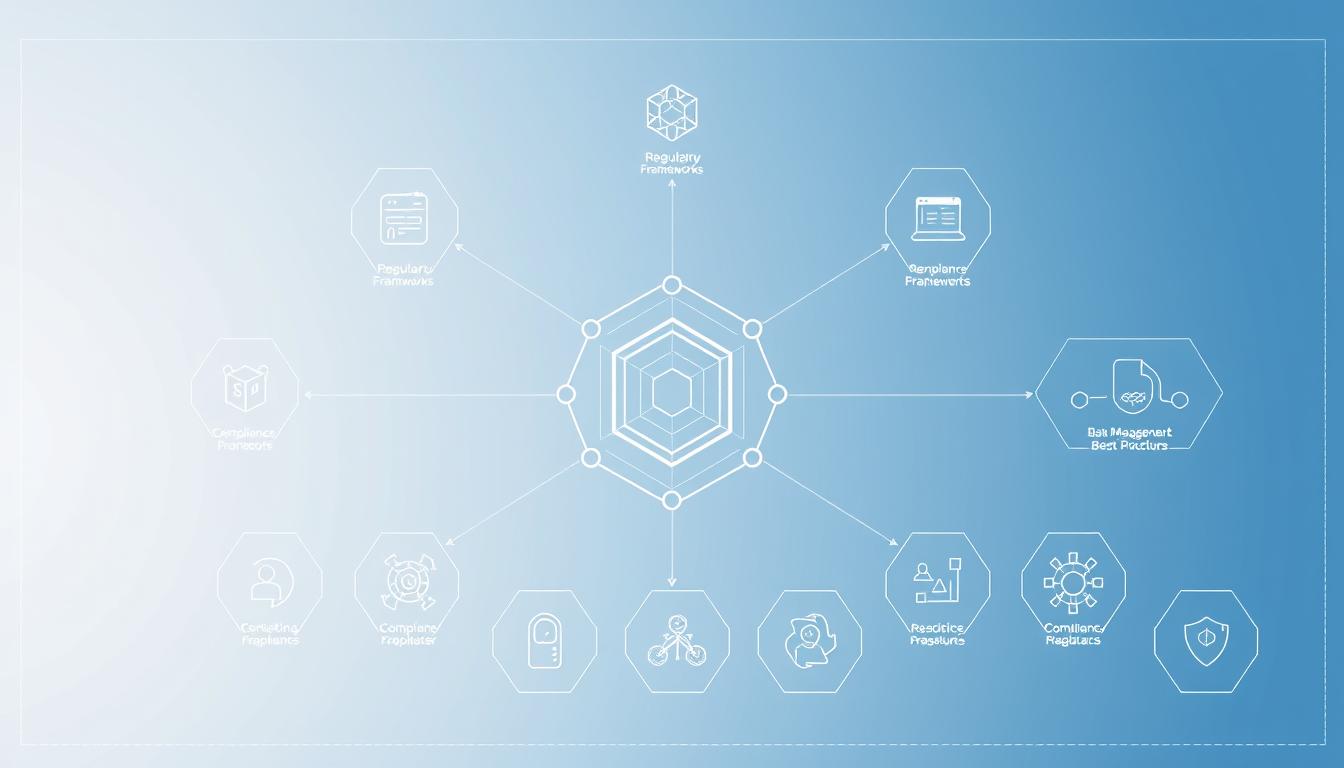Now Reading: Using Machine Learning for Cryptocurrency Volatility Prediction
- 01
Using Machine Learning for Cryptocurrency Volatility Prediction
Using Machine Learning for Cryptocurrency Volatility Prediction

This report frames why advanced models matter for U.S. investors who need risk-aware choices in a 24/7 digital asset market. We compare econometric baselines like HAR and GARCH with modern approaches such as gradient boosting, MLPs, and sequence models tailored to financial time series.
The dataset uses 5-minute Coinbase prices aggregated to 6-hour realized measures for eight major coins from Dec 21, 2021 to Dec 22, 2022.
Sentiment features come from headlinehunter.ai at the same 6-hour horizon across channels: coin-specific, general crypto, mining, regulation, influencers, and Covid-19.
Key findings preview: ensemble and deep models often beat HAR, and sentiment boosts forecasts in about 54% of cases. Later sections show cross-market network effects with stocks, bonds, FX, and commodities and discuss metrics like MAE, RMSE, and directional accuracy.
Practical focus: we tie forecasts to position sizing, hedging, regime detection, and a roadmap toward multiscale graph networks and robust deployment pipelines.
Key Takeaways
- Comparative study shows modern approaches typically outperform HAR baselines on 6-hour realized series.
- AI-derived sentiment helps nonlinearly and improves no-sentiment baselines about half the time.
- Data: 5-minute price aggregation for eight Coinbase coins across a full year of 2021–2022.
- Evaluation uses MAE, RMSE, directional metrics, and checks model stability and bias-variance tradeoffs.
- Cross-market networks reveal spillovers with other asset classes, motivating graph-based models.
- Focus on U.S. investors: actionable links to hedging, sizing, and regime-aware rules for live portfolios.
Why volatility prediction matters now for U.S. crypto investors
U.S. funds and trading desks require timely short-horizon risk signals to manage exposure in the 24/7 cryptocurrency market. Clear, high-frequency risk estimates support risk budgeting, options pricing, and compliance reporting for institutional mandates.
Cross-market linkages mean macro moves—Fed guidance, equity selloffs, or a stronger dollar—show up in crypto price swings. EMGNN evidence implies that crypto behavior is tied to conventional financial markets, so monitoring spillovers from the stock market and bond markets is vital.
For exchanges and market makers, intraday horizons matter. Tighter control of exposure reduces slippage in hedging and improves capital efficiency for leveraged positions. Conditional risk limits and smart order execution rely on accurate short-run signals.
Advanced models such as machine learning adapt to nonlinear shifts and structural breaks common in digital assets. Integrating ML-driven volatility signals into dashboards enables real-time alerts, scenario planning, and more resilient trading rules.
- Supports options pricing, risk budgets, and compliance reports for U.S. investors.
- Links macro catalysts to intraday risk through cross-market spillovers.
- Reduces hedging slippage and boosts capital use for active desks.
- Helps align execution strategies and conditional limits across platforms.
Defining crypto volatility and choosing the right estimator
Realized risk measures start with intraday returns summed into fixed windows. To capture short-horizon dynamics, 5-minute log-return squares are summed across non-overlapping six-hour blocks. This approach balances microstructure noise and information content at the selected time interval.
Realized volatility from high-frequency data: 5-minute to 6-hour aggregation
Five-minute sampling is common because it reduces tick noise while keeping intraday signals. Summing squared 5-minute returns into 6-hour windows yields 1,461 observations per series — the total number needed for reliable model training and validation.
Operationally, 6-hour RV maps well to treasury checks, risk setpoints, and sentiment updates, making forecasts actionable for desks and custodians.
QML-based realized volatility (QML-RV) for noise and jumps
Standard RV is simple but sensitive to microstructure effects and jumps that are frequent in the cryptocurrency market. QML-RV (Da & Xiu) models noise as MA(∞) and explicitly accommodates jumps, improving finite-sample bias and robustness.
- Higher-frequency sampling raises noise sensitivity; robust estimators reduce bias.
- Estimator choice affects scaling, loss functions, and interpretability in time series tasks.
- When mixing daily QML-RV with intraday RV, keep separate models or resample to a common horizon.
Practical notes: log all cleaning steps, outlier rules, and estimator parameters to ensure reproducible backtests. Robust estimators also stabilize feature-target links and aid machine learning models when regimes shift.
From HAR and GARCH to AI: the evolution of volatility modeling
Short-horizon risk modeling now balances transparency and flexibility. Traditional tools remain useful but need adaptation for nonstop trading and jumpy returns.
HAR for short-term horizons in crypto’s 24/7 market
The HAR design combines daily, weekly, and monthly components to capture heterogeneous drivers. In our 6-hour framework this maps to 8- and 28-period averages (roughly 2 and 7 days).
This structure keeps the model simple and explainable, and studies often find HAR competitive versus many GARCH variants at short horizons.
GARCH-family strengths and limits under nonlinearity and jumps
GARCH models excel at volatility clustering and leverage effects. They offer clear parametric interpretation and fast inference.
However, GARCH is sensitive to misspecification when jumps or structural breaks occur. Regular recalibration is essential to avoid degraded forecasts.
- When to keep HAR: quick deployment, explainability, and a strong benchmark for time series forecasting.
- Where AI helps: advanced machine learning and learning models relax parametric forms and ingest sentiment, cross-asset signals, and microstructure features.
- Practical note: mixed-frequency tools (e.g., MIDAS) bridge macro drivers with intraday data.
Recommendation: retain econometric benchmarks while testing machine learning variants, and align model choice with data richness, latency limits, and governance rules in the U.S. financial market.
Machine learning cryptocurrency volatility prediction
Short-horizon forecasts gain when models can fuse high-frequency returns with external signals like volume and headlines.
Tree ensembles and neural networks offer different strengths for 6-hour risk tasks. Gradient boosting tools such as LightGBM and XGBoost handle tabular inputs, missing values, and heterogeneous features with fast training and clear feature importance.
By contrast, LSTM, CNN-BiLSTM, and MLP excel at temporal patterns. These nets capture sequential dependencies that simple lags miss. Empirically, LightGBM, XGBoost, and LSTM beat HAR at intraday horizons in our tests. CNN-BiLSTM and MLP were competitive.

- Input groups: lagged RV, realized ranges, sentiment, volume, cross-market signals.
- CV: use time-series splits to avoid leakage when comparing to HAR.
- Interpretability: feature importance for boosting; attention or occlusion for nets.
- Costs: ensembles are faster in inference; deep nets need more training and latency budget.
- Robustness: ensemble stacking and calibration stabilize predictive performance.
Guidance: match model family to data shape and ops limits. Sentiment raised ML scores in 54.17% of cases, while it added no gain for HAR. Gains are real at six-hour horizons but vary by coin and timeframe.
Sentiment as a nonlinear driver: what AI sees that econometrics misses
Headline sentiment is timestamped, normalized, and rolled into 6-hour windows so features align with the forecasting interval and avoid lookahead bias.
AI-generated news sentiment across channels and time alignment
Raw content from Bloomberg, Forbes, Cointelegraph, Decrypt, X, and Reddit is translated, de-duplicated, and scored on a -1 to +1 scale. Each item gets a timestamp and channel label.
For every 6-hour block we compute the total number of items, the average sentiment, and sentiment density (fraction of nonneutral items). These three capture volume, tone, and concentration.
Nonlinear gains: when sentiment improves forecasts
Tree and neural networks detect threshold effects and interactions across channels. Models show added value in 54.17% of cases, especially during regulatory headlines, influencer spikes, or liquidity stress.
- Feature design: include lags and exponential decay to model delayed impacts.
- Quality controls: translation checks, deduplication, and drift monitoring.
- Validation: channel-wise ablation to measure incremental value and avoid overfitting.
Practical note: sentiment enriches alerts for market surveillance and pre-hedging; linear baselines like HAR rarely capture these nonlinear signals.
Data design for robust forecasts: markets, intervals, and features
We merge 5-minute price bars and time-stamped headlines into non-overlapping six-hour windows to produce stable targets and aligned inputs for series forecasting.

Scope: BTC, ETH, DOT, SHIB, SOL, ADA, DOGE, and LTC from Dec 21, 2021 to Dec 22, 2022. These coins cover ~70% of Coinbase market cap in the sample and ensure liquidity for intraday analysis.
Feature schema and sampling rationale
- Market microstructure: 5‑minute returns, realized range, volume spikes aggregated to 6-hour RV.
- Sentiment (6-hour cadence): total number of items, average sentiment, and sentiment density by channel.
- Cross-asset and technical inputs: USD pairs, short-term momentum, and normalized indicators for comparability.
We handle missing data with forward-fill and coin-specific masks, treat exchange outages as excluded windows, and document all lineage for auditability.
Chronological splits use walk-forward folds. Labels (RV at t) use features up to t−1 to avoid leakage. Per-coin and pooled models are tested; hierarchical multi-task fits can transfer learning across coins while normalizing variance for stable training.
Benchmarking methods and losses: how we judge predictive performance
Clear, consistent loss metrics let teams compare methods across coins and time windows. Proper scoring turns raw errors into operational insight for trading desks and risk teams.
Core regression metrics and training targets
The mean absolute error (MAE) reports average absolute deviations. It is robust to outliers and favours median forecasts.
Root mean squared error (RMSE) penalizes large misses and links directly to the mean squared loss used during model fitting. Use RMSE when large errors are especially costly.
Directional and stability checks
Directional accuracy measures whether the sign of the change is correct. It is a practical complement to numeric losses for hedging and alarms.
Bias–variance diagnostics and calibration bands assess overfitting and reliability across rolling windows. Ensembles, regularization, and expanding-window CV reduce variance and boost stability.
| Metric | Use case | Strength | Notes |
|---|---|---|---|
| MAE | Robust scoring | Less sensitive to spikes | Good for noisy series |
| RMSE | Risk of large errors | Punishes big misses | Matches mean squared loss in training |
| Directional | Operational alerts | Actionable sign info | Combine with numeric losses |
| Stability | Model governance | Confidence intervals | Requires rolling CV and holdouts |
Practical rule: report both statistical metrics and economic impact. Validate with time-series CV, fixed holdouts, and clear latency budgets before production so model performance aligns with business needs.
Deep learning for financial time series: LSTM, BiLSTM, and hybrids
Recurrent networks with gated cells excel at capturing long-range patterns in high-frequency return series.
LSTM uses input, forget, and output gates to keep or discard signals across many steps. This gated design helps the model learn persistent swings and slow-decay effects in realized series.
Bidirectional LSTM is trained to build richer representations by reading sequences forward and backward. At inference you can preserve causal forecasting by using the forward pass, while the bidirectional training often improves internal features.
Hybrid CNN-BiLSTM models first extract local motifs with convolutional filters and then model long dependencies with recurrent layers. This combo often boosts performance when spikes and short patterns matter.

- Embed exogenous inputs—sentiment, volume, and cross-asset signals—alongside lagged RV for richer context.
- Use dropout, weight decay, and early stopping to reduce overfitting in limited samples.
- Apply attention or gradient saliency for interpretability and to surface drivers of forecasts.
- Tune sequence length, batching, and horizon alignment to stabilize training on financial time series.
| Aspect | LSTM / BiLSTM | CNN-BiLSTM | Ensemble |
|---|---|---|---|
| Strength | Long-range memory | Local pattern + sequence | Robustness across regimes |
| Cost | Moderate training, low inference | Higher training, moderate inference | Higher latency, best accuracy |
| Deploy notes | Batching speeds inference | Needs conv tuning | Combine with boosting for stability |
Practical guidance: weigh training time and latency against accuracy. For production, ensemble deep nets with boosting and monitor for distributional shifts. Retrain on a cadence tied to regime change detection and keep reproducible pipelines and clear lineage for any model updates.
For implementation details and anomaly work with neural networks see neural networks anomaly detection.
Gradient boosting in practice: LightGBM and XGBoost for volatility horizons
Boosting algorithms have become a go-to for tabular financial signals, handling irregular data and nonlinear effects with speed.
How they handle dirty inputs: gradient boosting tolerates missing values, downweights outliers via robust loss choices, and models nonlinear interactions without manual feature crossing. It fits well to 6‑hour targets and often improves predictive accuracy versus linear baselines.
Hyperparameters to watch: learning rate controls convergence and bias‑variance. Tree depth and max leaves tradeoff expressiveness and overfit risk. Early stopping on time-aware folds and modest learning rates usually yield the best out‑of‑sample scores.
Interpretability, indicators, and ops
- Use SHAP and gain importance to select EMA, MACD, RSI, momentum, and volume metrics while noting differences for price vs. risk targets.
- Use walk‑forward CV, early stopping, and time splits to prevent leakage and curb overfitting.
- Preprocess irregular intervals and exchange gaps with calendar masks, imputation rules, and event flags.
- Monitor model drift via distribution tests and schedule periodic recalibration. Combine boosting with sentiment for nonlinear uplifts seen in tests.
| Topic | Action | Benefit |
|---|---|---|
| Missing data | Native handling + impute flags | Stable training |
| Hyperparams | LR, depth, leaves, early stop | Bias‑variance control |
| Indicators | EMA, MACD, RSI, momentum, volume | Improved signal for tabular tasks |
| Monitoring | Drift tests + recalibration | Operational resilience |
Cross-market spillovers and network effects: a future-facing view
Short-run crypto risk often tracks shocks in equities, rates, FX, and commodities rather than moving on its own. Empirical EMGNN studies that embed QML-RV from CME Bitcoin futures alongside RV series for S&P 500 futures, 30-year T‑bond futures, DXY futures, and COMEX gold find dynamic linkages. These links improve forecasts when the interaction graph is learned and updated.
Volatility linkages with stocks, bonds, FX, and commodities
Evidence shows realized risk co-moves across asset classes during liquidity squeezes and risk-off episodes. Equity selloffs, rising rates, or a stronger dollar often precede spikes in short-horizon crypto risk.
Why risk is not isolated from conventional markets
Tighter funding, cross-margining, and hedge flows transmit shocks. Treating digital assets in isolation can understate tail exposures and misprice hedges.
- Operational value: embedding cross-market signals yields better hedging and capital allocation.
- Modeling: network representations capture evolving influence weights rather than fixed exogenous regressors.
- Practice: monitor macro calendars and U.S. policy cycles that often drive global liquidity shifts.
| Linkage | Transmission channel | Model action |
|---|---|---|
| Equities (S&P 500) | Risk-off flows, margin calls | Include equity RV lags and graph edges |
| Rates (30Y T‑bond) | Funding cost and carry | Edge weights adapting to yield shocks |
| FX (DXY) | Dollar strength alters dollar‑priced liquidity | Dynamic features for dollar index shocks |
| Commodities (Gold) | Safe‑haven reallocations | Cross‑asset nodes in multiscale graphs |
Multiscale graph neural networks: embedding dynamic interactions
Multiscale graph models capture interactions across short, medium, and long horizons by linking asset nodes at matching temporal scales. This design separates fast spillovers from slower macro moves and makes cross-asset links explicit.
Evolving multiscale graph learners for scale-specific dependencies
EMGNN learns separate adjacency blocks for different horizons. Each block models edges among assets for that timescale, so intraday shocks and weekly trends use distinct connection weights.
Interpretability via learned adjacency: reading the network over time
Training optimizes forecast error while penalizing rapid changes in adjacency. The result is smoother, parsimonious graphs that still adapt when relationships shift.
- Signals: minimize error plus graph smoothness and sparsity constraints.
- Interpretation: inspect evolving adjacency matrices to find leading and lagging markets.
- Robustness: works across standard RV and QML-RV estimators and multiple horizons.
- Ops: GNNs are heavier to train; use them to produce features or priors for faster downstream models.
| Model | Strength | Use case |
|---|---|---|
| EMGNN | Dynamic cross-market structure | When graph dynamics matter |
| Boosting | Fast tabular fit | Low-latency scoring |
| Sequence nets | Temporal patterns | Single-asset regimes |
Practical note: EMGNNs often beat standalone boosting or sequence nets in regimes with strong cross-asset links. For U.S. desks, they offer clear systemic insight and useful features for risk teams using advanced machine learning and neural networks to improve predictive performance in financial markets.
Technical indicators and microstructure features to enrich models
Practical indicator sets transform raw intraday bars into signals that models can use reliably. Use short and long EMAs (10/30/200), MACD with standard fast/slow/ signal, and RSI windows (10, 14, 30, 200) tuned for crypto’s round‑the‑clock trading.
Design note: shorter windows capture rapid regime shifts; longer windows stabilize trend estimates. Calibrate per coin—low‑liquidity altcoins need slower settings than BTC or ETH.

Core technical and momentum signals
- EMA family (10/30/200), MACD histogram and crossover timings, and RSI across multiple lookbacks.
- Momentum, price rate of change, and stochastic oscillator to detect short bursts and mean reversion.
- Use these as features for both volatility and price tasks; they often help price prediction while remaining useful for risk targets.
Microstructure and trade-level features
Include realized range, volume imbalance, trade counts, and simple order flow proxies (bid/ask pressure). These capture intraday microstructure effects that technicals miss.
| Feature | Why it helps | Recommendation |
|---|---|---|
| Realized range | Captures intraday spike size | Aggregate 5‑min to 6‑hr |
| Volume imbalance | Shows buying/selling pressure | Normalize by rolling medians |
| Trade counts | Liquidity proxy | Include as raw and z‑score |
Normalization, selection, and robustness
Apply rolling z‑scores and stationarity checks. Use SHAP, permutation importance, and mutual information to rank features.
Reduce redundancy: detect multicollinearity with variance inflation factors and remove or combine highly correlated indicators.
Finally, run ablation tests per coin and align indicator sampling with label horizons to keep causality clear. Combine indicators with sentiment and cross‑asset features for richer feature sets and better out‑of‑sample performance.
Comparative results from recent studies: what consistently works
Across multiple coins and walk‑forward folds, modern tabular and sequence approaches tend to beat HAR-style baselines for six‑hour realized targets.
Head-to-head: ML vs HAR on short-term realized targets
Gradient boosting (LightGBM, XGBoost) and sequence nets (LSTM, CNN-BiLSTM, MLP) lower MAE and RMSE in most tests. Gains are largest for liquid coins and during news-driven windows.
EMGNN robustness across estimators, coins, and horizons
EMGNN that embeds cross-market graphs improves stability and accuracy versus single-asset fits. Benefits hold when using standard RV and QML-RV, and across short and medium horizons.
- Sentiment raised scores for flexible models in ~54.17% of experiments; linear HAR saw no consistent uplift.
- Performance varies by coin—liquidity and news sensitivity drive heterogeneity.
- Interpretability arrives via SHAP for trees and learned adjacency for graphs, aiding model trust.
| Aspect | Findings | Practical note |
|---|---|---|
| MAE vs RMSE | Both improved for modern models | Report both for statistical and economic impact |
| Robustness checks | Estimator/horizon/holdout tests passed | Use rolling CV and QML-RV for stress cases |
| Compute | Ensembles and GNNs cost more | Simpler models suffice when latency or data are limited |
Guidance: choose model families by data richness and ops limits. Keep clean pipelines, strict validation, and continuous monitoring to preserve predictive accuracy in evolving financial markets.
Designing a future-ready pipeline: from discovery data mining to deployment
A production-ready stack must connect discovery data mining to real-time scoring with reproducible lineage and governance. Start with validated ingestion, timestamp alignment, and a feature store that records every transform as knowledge discovery data.
Feature engineering, cross-validation, and hyperparameter tuning
StandardScaler, grid search, and time-aware folds are practical defaults for boosting models. Use walk-forward CV to avoid leakage and tune hyperparameters on chronological splits.
Tip: log hyperparameter trials and tie each model run to a versioned dataset to keep audits simple.
Monitoring drift, recalibration windows, and real-time inference
Monitor data drift, concept drift, and model performance with automated alerts and retraining triggers. Define recalibration windows tied to liquidity cycles and regime signals.
For low-latency scoring, deploy batching, model caching, and lightweight ensembles. Keep a rule-based fallback when confidence is low and include cost controls for heavy graph models like EMGNN.
- Governance: CI/CD, model versioning, reproducible builds, and audit trails.
- MLOps: feature stores, lineage, and scheduled retraining.
- Community: present results at an international conference to validate benchmarks and share best practices.
Risk management and strategy translation for U.S. market participants
Using anchored forecast confidence to pace execution reduces slippage and improves realized returns. Forecasts must feed clear rules so trading desks, treasuries, and risk teams can act within governance limits.
Using forecasts for sizing, hedging, and regime detection
Dynamic position sizing: scale exposure by forecast bands and VAR-based limits. If a six-hour signal rises above a set threshold, trim delta exposure or reduce position notional to keep tail risk within approved limits.
Hedging frameworks: calibrate futures and options delta and vega hedges to forecast bands. Use staggered expirations and strike ladders when confidence is low to reduce hedging cost.
Regime detection: apply simple threshold rules or a state-space overlay to flag high-risk regimes. Switch to conservative sizing and wider liquidity buffers when the model signals an elevated state.
- Embed cross-market inputs so spillovers from the stock market or rates adjust hedges ahead of stress.
- Translate forecast confidence into execution tactics: staggered orders, dynamic margin, and limit-based routing.
- Align 6-hour forecast horizons with treasury and risk rebalance cadences for U.S. operations.
| Action | How to apply | Operational benefit |
|---|---|---|
| Position sizing | Scale by forecast band + VAR caps | Better drawdown control |
| Hedging | Futures/options laddered to regime | Lower hedge cost; smoother P&L |
| Regime alerts | Thresholds or hidden-state flags | Faster risk-off posture |
| Stress testing | Simulate stock market and rate shocks | Validate hedge effectiveness |
Governance and explainability: document model inputs, decision rules, and backtests. Use SHAP or adjacency summaries from graph features to support board reporting and model risk reviews. Regulators expect traceable model risk management for digital assets.
Operational payoff: properly translated signals improve capital efficiency, reduce margin drag, and tighten drawdown control—helping U.S. firms convert forecast gains into measurable risk-adjusted performance.
Limitations, data gaps, and research directions
Even with careful curation, headline feeds and channel coverage leave gaps that can bias downstream models. Sentiment channels are sparse at short intervals, and AI-generated labels can embed systematic tone or translation bias. These issues affect predictive performance and must be monitored with ongoing quality checks.
Interval choice matters: six-hour windows balance signal and sample size, but shorter horizons raise missing-data noise. Aligning daily QML-RV with intraday targets needs resampling, mixed-horizon models, or hierarchical labels to avoid misalignment.
Single-exchange samples risk survivorship and venue bias. Generalization across coins and regimes requires strict walk-forward validation, coin-level holdouts, and stress folds that mimic market shocks in the U.S. financial market.
- Data needs: richer microstructure and order-book feeds improve short-run features but increase storage and latency demands.
- Compute: graph-based EMGNNs give gains but raise data dependency and runtime cost; use them as feature generators when latency is tight.
- Research: causal and counterfactual tests, open benchmarks, and shared datasets will improve comparability of time series forecasting results.
Next step: publish reproducible experiments and present findings at conferences to spread international conference knowledge and accelerate practical advances in this area, while keeping model governance and reproducibility central to any adoption of machine learning.
Where the trend is heading and how to stay ahead
Looking ahead, teams that pair robust estimators with modular pipelines will outpace peers in operational risk control.
Expect the field to move from HAR/GARCH to ensembles, deep nets, and multiscale graph models that embed cross‑market links. QML‑RV and EMGNN-style training should improve out‑of‑sample stability and help U.S. desks manage tail events.
Adopt richer inputs—on‑chain metrics, order‑book signals, and higher‑quality sentiment—while keeping strong governance and explainability. Attend SIGKDD and ACM SIGKDD forums and an international conference to convert conference knowledge discovery into production work.
Actionable steps: build modular discovery data mining pipelines, run collaborative benchmarks, and align economic evaluation with statistical metrics. Firms that operationalize knowledge discovery data with disciplined MLOps gain a clear edge in the cryptocurrency market and in managing short‑run volatility.














